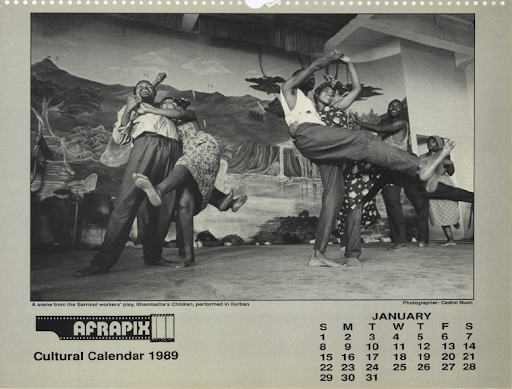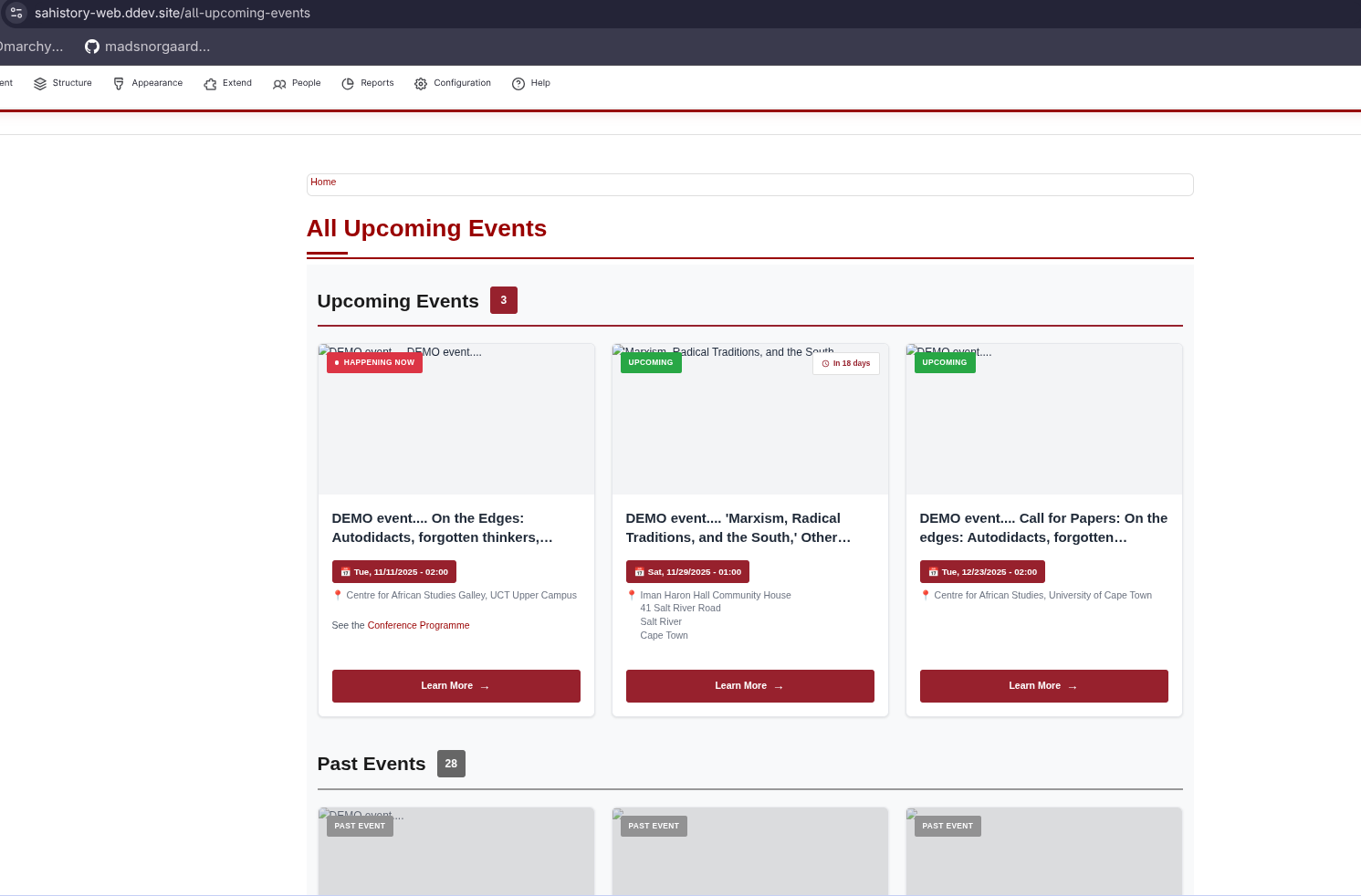A Moment Frozen in Film

There is a photograph that has stayed with me for years - a brilliant capture by Cedric Nunn from the Afrapix Cultural Calendar 1989. The image shows performers mid-leap, suspended in an impossible moment of joy and movement against a painted theatrical backdrop. It is one of those photographs where time does not just pause; it holds its breath.
I first encountered this image while working on the Afrapix feature for South African History Online (SAHO), digitising and preserving the extraordinary photographic archive that documented South Africa's struggle years and cultural resistance. Cedric Nunn, one of South Africa's most significant documentary photographers, had this remarkable ability to capture not just events, but the spirit of a moment - the energy, the defiance, the celebration that pulsed through communities during apartheid.
Cape Town and the Weight of History
Working with these archives in Cape Town was its own temporal experience. There is something about that city - perhaps it is the mountain that seems to watch over everything, unchanging while the city churns below, or maybe it is the layers of history visible in every neighbourhood transition. Time moves differently there. You can stand at the District Six Museum and feel decades collapse into a single point of grief and memory. You can walk through the Company's Garden and feel centuries breathing through the oak trees.
Processing thousands of Afrapix images, each one a fragment of frozen time, created this strange temporal vertigo. Here was 1976 bleeding into 1985, flowing into 1990. Photographers like Nunn, Omar Badsha, Paul Weinberg, and others had not just documented history - they had caught time in bottles, preserving the exact texture of light on a particular afternoon, the precise angle of a raised fist, the specific joy of a cultural celebration that refused to be diminished by oppression.

From Archive to Active Memory
This relationship with time - how we capture it, organise it, and make it accessible - brings me to SAHO's newest feature. After years of working with temporal data in these historical archives, we have launched a comprehensive Events platform that bridges past and future, archive and action.
The new Events section is not just a calendar - it is a living timeline where South African history continues to unfold. Built with Drupal's powerful content management capabilities, it handles the complex temporal states that real cultural events demand. A conference can be "happening now" while still having "upcoming" sessions. An exhibition exists simultaneously in multiple temporal dimensions - as a current experience for today's visitors and as tomorrow's historical record.
The Technical Poetry of Time
For those interested in the technical side: we are implementing what is called bitemporal modelling. This means tracking not just when events actually happen (valid time) but also when that information enters our system (transaction time). This matters enormously for historical accuracy. When someone discovers documentation about a 1960s protest that was previously unrecorded, we can add it to the historical record while preserving the metadata about when this information came to light.
The platform uses custom Drupal entities with sophisticated temporal attributes, allowing events to exist in multiple states simultaneously. It is not just about "past," "present," or "future" - it is about understanding time as a continuous flow where history is constantly being made, documented, revised, and understood anew.

Your History, Our Collective Memory
But here is what matters most: this platform needs you.
Just as the Afrapix photographers understood that history is not made by famous figures alone but by communities, cultural workers, artists, and ordinary people doing extraordinary things, SAHO's Events platform is designed to be fed by collective contribution.
Are you organising a heritage walk? Add it. Hosting a discussion on decolonisation? List it. Planning an exhibition of struggle posters? Document it. Discovered information about a historical event? Share it.
Every event you add becomes part of the living archive. Today's community gathering is tomorrow's historical record. That workshop on oral history methods, that book launch about forced removals, that performance piece about identity - they all matter. They are all part of the continuous story.
Time as a Collaborative Canvas
Cedric Nunn's photograph from 1989 captures dancers mid-leap, but it also captures something else - the understanding that cultural expression itself is an act of resistance and documentation. Every event we create, attend, and document is another frame in the endless film of our collective history.
The new SAHO Events feature is not just about scheduling - it is about recognising that we are all archivists of the present moment. We are all photographers freezing time, even if our camera is just a keyboard and a submission form.
Visit sahistory.org.za/events to explore upcoming events and, more importantly, to add your own. Because in the end, history is not just about what happened - it is about what is happening, what will happen, and our collective responsibility to ensure these moments are not lost to time.
As I learned from those long days with the Afrapix archive, surrounded by Cedric Nunn's brilliant captures and the work of so many other documentary photographers: every moment has the potential to be history. The question is - will we preserve it?

